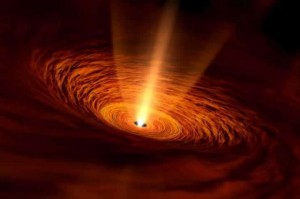 We are aware that stars are created from thick clouds of gas that have collapsed, but precisely why they grow throughout their infancy continues to be a subject of discussion. Now, Japanese researchers happen to be in a position to examine a star in this misunderstood state, and they believe they’re nearer to comprehending what is happening.
We are aware that stars are created from thick clouds of gas that have collapsed, but precisely why they grow throughout their infancy continues to be a subject of discussion. Now, Japanese researchers happen to be in a position to examine a star in this misunderstood state, and they believe they’re nearer to comprehending what is happening.
Utilizing the Atacama Super Large Millimeter Array, scientists could detect the creation of the disc around an infant star, named TMC-1A, that’s 0.68 times the size of our Sun and can be found 450 light yrs distant from the Earth. The area is experiencing a significant transition, due to the fact that the gas isn’t falling onto the area of the star, but rather being arranged in a planetary disc, that may result in the creation of planets.
To comprehend the creation mechanism of a disc, we must identify the disc in the outer area to identify the location of its own border.
The astronomers had the ability to recognize the regions that are active across the star. The rapid rotating disc goes 8 billion miles in the star area, while materials from the first arrival cloud are discovered outside the disc.
We anticipate that as the infant star grows, the border between the disc as well as the ‘infall’ area goes out,” said Aso. “We’re confident that future ALMA measurements may show such development.
ALMA is a primary device which has the ability to detect the tenuous border between both of these areas with such precision, as well as the team could confirm lots of details about the device thanks to these measurements.